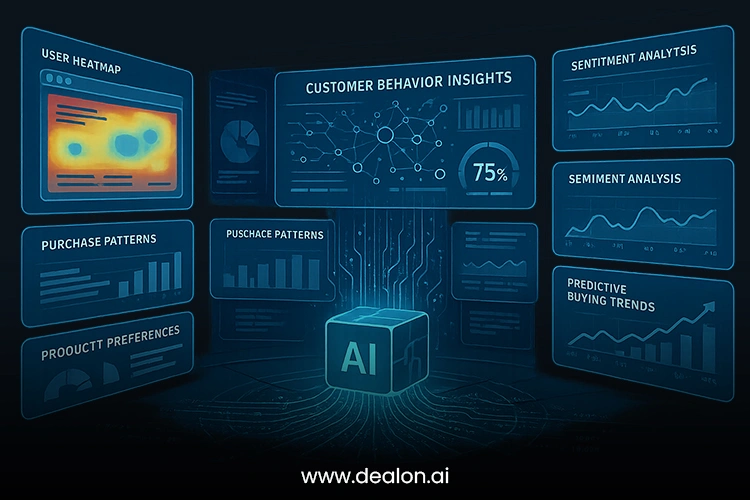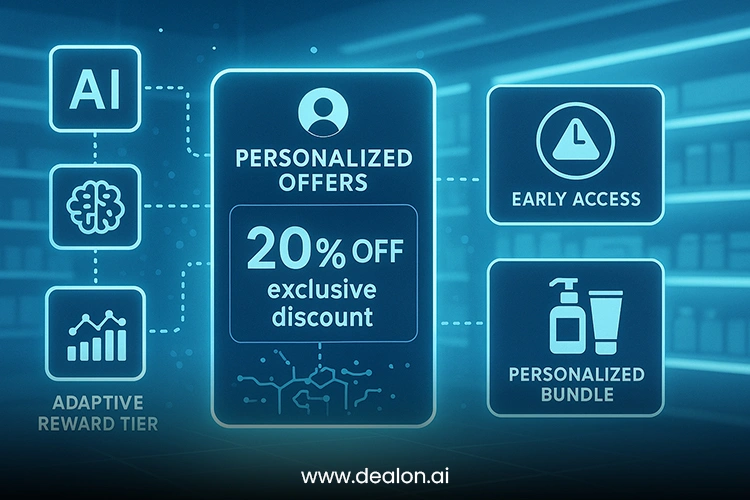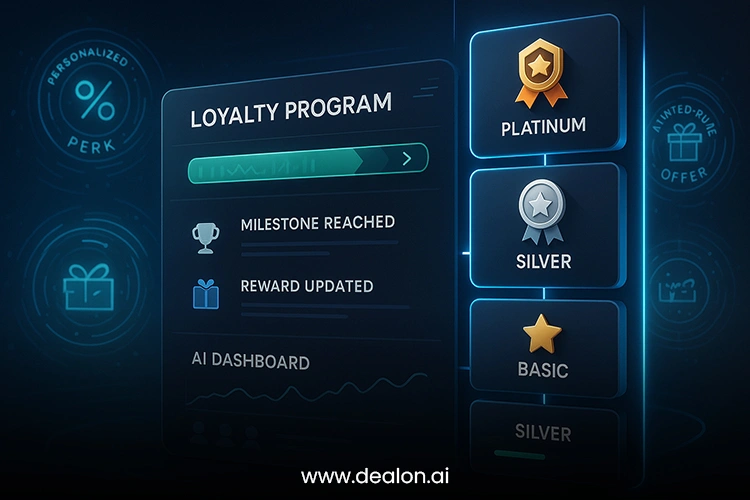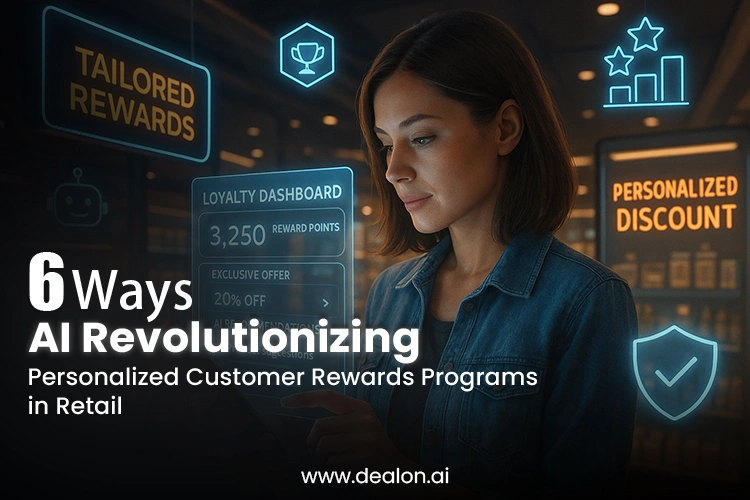Because retail is so competitive now, making customers loyal is necessary rather than just a benefit. Traditional customers used to receive points or broad discounts, but this system will soon replace them. People today want to feel that what they see and buy is tailored to their likes, habits, and online interactions. The new approach has enabled artificial intelligence (AI) to reinvent how retailers handle and use loyalty programs.
Such programs use deep learning, predictive analytics, and behavioral models to give personalized rewards to each shopper. AI adjusts rewards in real situations, which helps keep users engaged and loyal to the company. Thanks to hyper-personalized discounts, AI games, and instant data gathering, the retail experience looks completely different.
Besides, AI helps retailers guess what customers might need, so they can respond to them ahead of time instead of using discounts as their only form of engagement. With all the available data, machine learning brings out how customers spend which helps brands bring forth smart and relevant rewards for greater sales and loyalty to the brand. Sophisticated AI systems are helping Customer Rewards Programs grow into systems that learn and change, consistently making customers happy and aiding the company’s growth.
Also Read: How AI is Revolutionizing Personalized Finance Management for the Future
Using AI for Analyzing Data About Consumers

With today’s digital transformation, data is as valuable as currency, and AI ensures we use it well. Artificial intelligence for data analysis lets retailers surpass simple rewards programs and develop custom strategies that suit each customer’s preferences. With machine learning and by exploring big, multi-faceted datasets, businesses can develop personal strategies for each user.
Unlike traditional analytics, which uses old trends and general consumer groups, AI actively learns from every customer’s action as it occurs. This approach allows retailers to determine who and what they will buy accurately. With AI help, retailers learn if customers enjoy landing deals in sales, take advantage of limited offers, or are interested in purchasing first from unique collections. Because of these insights, retailers can manage their Customer Rewards Programs in real time to match each customer’s habits.
AI also examines emotions, how often someone engages and what activities relate to the responses. Brands are able to adjust their approach by learning small hints from customers and social media thanks to what AI can pick up with NLP. An example of this would be a system that notices when a customer often views eco-friendly things yet rarely buys them and so it offers a personalized reward for those products to help make a sale.
AI-based predictive analytics allow retailers to foresee what customers will buy next. This information can help them reward their most loyal customers instead of giving out promo codes. Noticing small patterns in behavior, AI ensures that the rewards players get are fun and make sense, not random. Consequently, retailers encourage customers to feel closer to and loyal to the brand. AI is not only making changes to Customer Rewards Programs but also revamping how personalized retail experiences will take shape.
Offering Rewards Customized for the Best Results

Today’s retail world has moved far past giving out generic loyalty incentives. Today’s shoppers are looking for rewards that reflect what they like and how they purchase. AI is making it possible for Customer Rewards Programs to provide incentives that match each person’s way of shopping, involvement levels, and what they are interested in. Analyzing real-time user behavior, AI enables the company to decide on the rewards customers will likely enjoy.
In contrast to discounts given to all, AI personalization ensures that every offer is worth something for the person it is sent to. Machine learning models ensure that insights are developed continually by segmenting customers, seeing if they focus more on exclusivity, saving money, or convenience. In that case, offering a first opportunity to purchase fashion from a limited batch can highlight again that the customer is highly valued. In contrast, a shopper who spends less when taking advantage of seasonal discounts could be given exclusive early-bird discounts, increasing the chance they’ll interact more with the retailer.
Besides, AI depends on predictive analytics to solve customer issues before they are raised. Shoppers who leave products in their virtual carts can be given personalized discounts or free delivery to encourage them to complete the transaction. Likewise, AI identifies users interested in a particular category, even if they haven’t purchased anything yet. Retailers use timed and relevant promotions to help more visits result in actual sales and make shopping more enjoyable for their customers.
On top of that, AI enables rewards to be updated whenever customer behavior shifts. These programs adapt offers instantly when interests change, keeping members interested. Because loyalty programs develop like ecosystems, they maintain a connection with consumers and keep them loyal for a long time. Thanks to hyper-personalized AI rewards, customers move from being part of a transaction to forming lasting, rewarding partnerships.
Programs Designed to Evolve With Customer Loyalty

Usually, loyalty programs follow a rigid structure, letting customers earn more rewards as they spend more money. Although these systems are designed to work well, they do not always consider changes in what consumers do and how they engage. Instead of being fixed, AI updates this model in real time using someone’s shopping habits, purchase history, and engagement.
Unlike usual loyalty programs, AI-based tiering rewards customers before they make a purchase. Suppose someone shows unexpectedly large spending on valuable goods. In that case, AI can place them directly in the premium tier to get exclusive things like early access, support from a personal concierge, or greater discounts. Having something instantly recognized by the store leads to people spending more and loving the brand longer.
On the other hand, AI-assisted changes in tiers can stop customers from leaving the program. When a customer interacts less frequently, AI may prompt the business to send an incentive to get the customer’s attention again. It could be anything from special discounts to short-term deals encouraging customers not to quit. Instead of waiting for problems, AI gets involved at key stages to keep the experience uninterrupted and enjoyable without interruption.
In addition, AI helps implement seasonal or event boosts to levels that allow users to spend more during the busiest times. If customers buy a lot during the holidays, special rewards can help them stick with that tier when the season ends. With the help of AI, old rewards programs are revamped, turning them into vibrant loyalty spaces where each customer only receives worthwhile and current rewards.
Using AI to Make Gamification: A Tool for Better Customer Engagement
Adding gamification to Customer Rewards Programs changes shopping into something fun and dynamic. Traditionally, rewards programs use simple points, but AI-powered gamification adapts what customers earn according to their different behaviors and choices. Using machine learning and behavioral analysis, AI adapts how people can engage with contests to ensure they are both interesting and fun.
Unlike the usual loyalty programs, AI-driven gamification offers challenges that fit a customer’s buying behavior. A green consumer could earn a special award by shopping for and spending $50 on environmentally friendly items monthly. Meanwhile, a loyal customer of beauty products could be offered “Purchase three skincare products and receive a VIP self-care kit.” Such missions encourage customers to enjoy success and move them closer to making premium purchases.
Artificial intelligence encourages engagement by offering unique interactive bonuses rather than just relying on simple transactions. Social media campaigns let customers pick up extra reward points, share their views on products, or bring friends to the shop so that they may become brand champions. In addition, AI uses a person’s purchasing record to customize game rewards daily, making spin offers, mystery prizes, and tiered bonuses feel unique and enjoyable.
AI additionally uses real-time customer interactions to keep improving these games. When people stop being engaged, the system increases challenges or prizes to help them keep playing for a long time. By using gamification, brands make it easier for customers to remember them and feel more attached to the brand. With AI, retailers can foster a bunch of happy, involved, and dedicated customers by making rewards more interactive, different every time, and perfectly individualized.
The Use of Chatbots and AI Assistants Improves How Customers Interact
With the assistance of AI, chatbots and virtual assistants now bring more immediacy, personalization, and intelligence to Customer Rewards programs. Because of AI, these tools replace standard customer service, acting as real-time loyalty assistants that boost user involvement, simplify the process of claiming rewards, and ensure clear communication between the brand and customers.
It’s particularly helpful that AI chatbots let customers get instant updates about their rewards and be alerted to exclusive offers. Instead of customers having to look through multiple webpages or call customer service, chatbots help instantly by answering brief inquiries about their balances, recent deals, and where they can spend them. Thanks to this, customers know how to maximize their points, so they keep engaging more with the program.
Also, these AI-powered virtual assistants show users relevant promotions by learning from what they have bought and looked at before. A chatbot could say, “Now that you’re so close to a free coffee, why not use your points today?” or tell you about the upcoming 20% discount if you’ve recently checked out sports clothing.
The insights brought by AI help make rewards relevant, encouraging people to feel tied to a brandMoreover, chatbots actively remind users about things like about to-expire rewards, flash sale events and temporary discounts. Instead of sending the same emails to everyone, AI helps by notifying customers on their phones, social networks or apps about their loyalty rewards, so they do not pass up any chance to use them.
Firms in retail improve the customer experience by bringing intelligent AI support into their loyalty program. These assistants simplify managing loyalty programs, encourage customers to feel closer to the brand, and turn them into loyal supporters.
How AI Supports the Security of Rewards Programs
As Customer Rewards Programs turn into advanced features, they are at high risk for account takeover, wrongly made referrals, and instances of fraudulently using rewards. They use these methods to make more points than needed, influence the reward system, or sell fake prizes. Using AI for security is switching up the process of spotting and preventing fraud, which helps keep loyalty programs legitimate, open, and advantageous for customers who deserve them.
Fraud prevention in AI mainly relies on machine learning that helps find unusual activities. Usually, fraud prevention is done with rules that don’t easily respond to shifting tactics from fraudsters. By learning from massive datasets that map customer purchases, rewards, and their interactions with businesses, AI can discover unusual activity immediately. Whenever a customer redeems many points through a separate source or from a place AI hasn’t noticed, it can trigger a check to confirm everything is in order.
They also apply behavioral biometrics analysis to separate real activity from attempted fraud. With attention to how people type, use their mouse, and log in, AI software can detect whether a user is human or a bot. AI ensures that using multiple kinds of authentication is standard in loyalty programs. When unusual activity is noticed, the system can activate steps such as requiring users to authenticate online and with biometrics before using their rewards. By doing this, the program is safeguarded since people who earn rewards are genuinely loyal.
With AI helping prevent fraud, retailers ensure their customers trust them, that their programs are safe, and that they do not suffer financial losses from reward abuse. AI in Rewards Programs safeguards real supporters from being defrauded and secures the program from fake reward activities.
Conclusion
With artificial intelligence, Customer Rewards Programs are changing from general and straightforward programs to personalized experiences tailored for everyone. Using artificial intelligence, companies in retail can study consumer preferences which helps them create personalized rewards. With targeted incentives, customers feel appreciated and are more likely to keep being loyal to the company.
In addition, AI enables loyalty schemes to change according to current shopping behaviors easily. Tier promotions and solid retention strategies are essential to keep customers interested, and gamification elements make winning fun. Added challenges for shoppers, increased rewards points based on AI recommendations, and surprise bonuses make playing the app more enjoyable for users.
With the help of these, customers can easily get help and enjoy all their loyalty rewards. Besides, machines prevent exploitation of reward programs by spotting suspicious actions and handling security. As a result, AI-based rewards programs make customers more satisfied, help the company grow, and keep loyal customers. Those retailers that use AI-driven personalization and secure technology will shape better loyalty environments for modern consumers.

